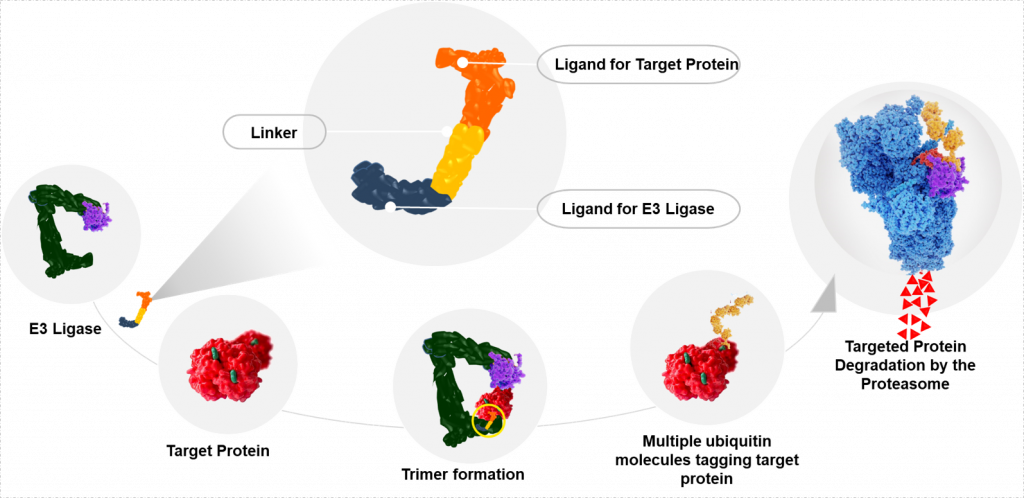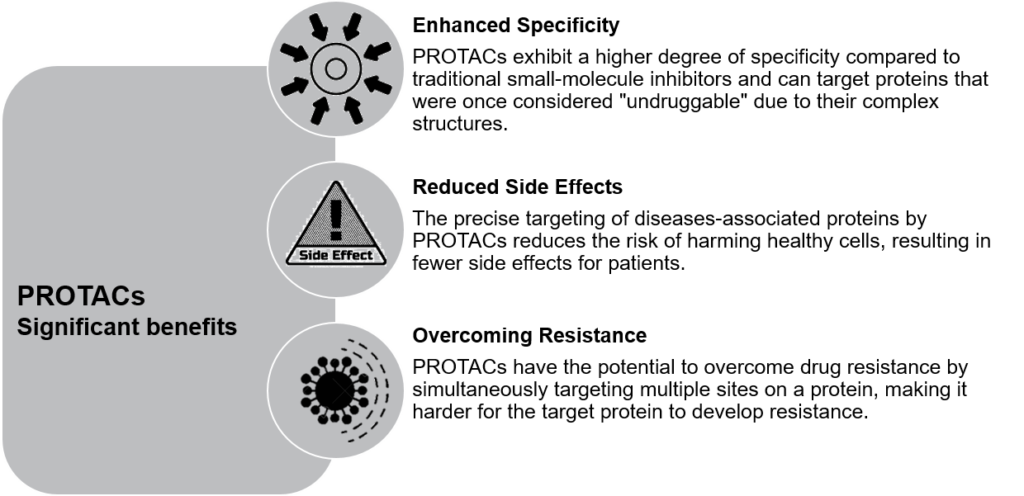In the ever-evolving landscape of medical science, innovative breakthroughs have the potential to transform the way we treat diseases. One such ground-breaking innovation is Proteolysis Targeting Chimeras (PROTACs). These molecular tools are redefining the field of protein degradation therapy. They are offering new hope in the battle against wide range of medical conditions.
Protein play a crucial role in maintaining the body’s normal functions. However, when certain proteins become misfolded or overexpressed, they can lead to a variety of diseases, including cancer, neurodegenerative disorders, and autoimmune conditions. PROTACs provide a novel approach to treat these diseases by selectively targeting and degrading specific disease-causing proteins.
The Intriguing Mechanism

The key to PROTACs success lies in their mechanism of action. These molecules are designed to bring together a disease-associated protein and an E3 ubiquitin ligase, a protein responsible for tagging other proteins for degradation. This fusion marks the target protein for destruction by the cell’s proteasome, the cellular waste disposal system. As a result, the levels of disease-causing protein decreases, potentially leading to a reduction in the severity of the disease.
The Remarkable Advantages of PROTACs

PROTACs in Battle Against Cancer
One of the most promising application of PROTACs is in the realm of cancer therapy. These compounds have shown immense potential in degrading oncogenic proteins responsible for tumour growth and metastasis. By selectively targeting cancer-related proteins, PROTACs offer a fresh approach to cancer treatment that may prove to be more effective and less toxic than conventional chemotherapy.
Expanding Horizons
While cancer therapy is a prominent application, PROTACs are not limited to oncology. Researchers are exploring the potential of these molecules in the treatment of neurodegenerative disorders like Alzheimer’s and Parkinson’s disease, autoimmune conditions, and infectious diseases. The adaptability of the technology paves the way for innovative drug development across various medical domains.

Challenges and Road Ahead
Despite their enormous potential, PROTACs face certain challenges. Designing effective PROTACs requires in-depth knowledge of the target protein and the development of small molecules with high affinity for it. Additionally, the regulatory pathway for PROTAC based drug is still evolving.
As the field of PROTACs continues to advance, researchers are working diligently to overcome these obstacles. This includes enhancing the selectivity of PROTACs, improving their pharmacokinetics, and developing more efficient E3 ligases. Moreover, the future holds great promise for Proteolysis Targeting Chimeras, with e potential for highly personalized therapies for a broad spectrum of diseases.